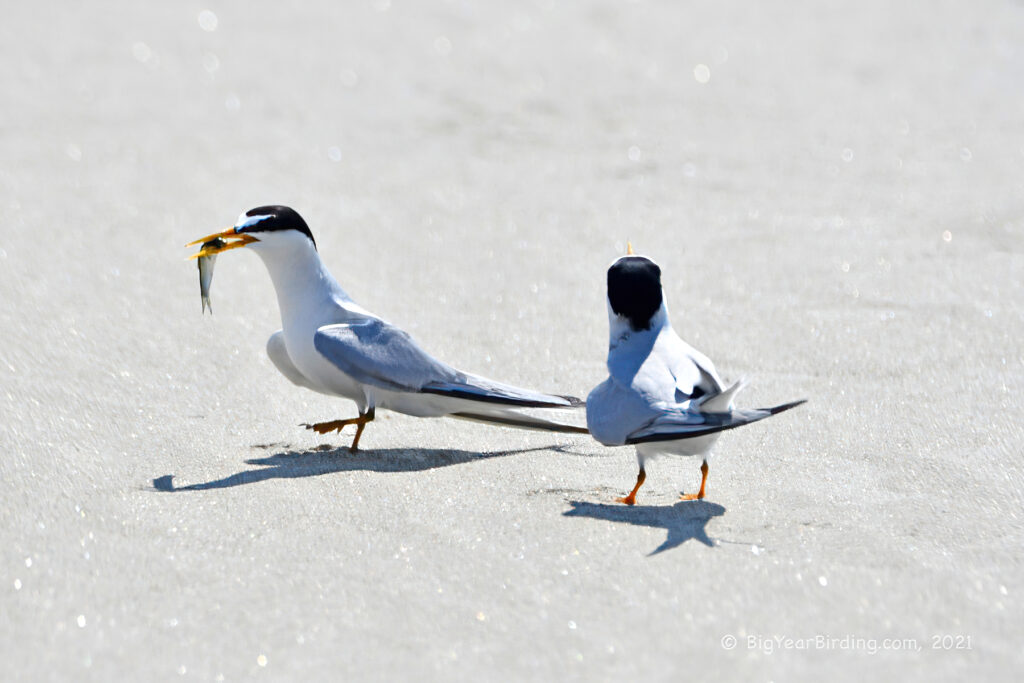
The Least Tern (Sternula antillarum) is the smallest member of the tern family, weighing just 1-1.5 ounces and measuring 8-9 inches in length. Its size and weight make it distinguishable from other tern species. Its plumage is predominantly white with gray wings and back, black crown, and a distinctive black-tipped yellow bill. The adult has a white forehead, while juveniles have a darker forehead.

Least Terns are migratory birds, spending their winters along the coasts of Central and South America and breeding along the coasts of the Gulf of Mexico, Atlantic, and Pacific oceans. They arrive at their breeding grounds in late April or early May and depart in August or early September. During breeding season, they are found in colonies on sandy or pebble beaches, salt ponds, or lagoons.
During the breeding season, Least Terns perform aerial displays to attract a mate. They fly high into the air, then glide back down with their wings and tail feathers spread wide. They lay their eggs in shallow depressions on the sand, and both parents take turns incubating the eggs for about three weeks. The chicks hatch and leave the nest within a few hours, but they remain near the parents for several weeks until they learn to fly.
Least Terns primarily feed on small fish, which they catch by diving into the water from the air. They are known for their fast and agile flight, and their ability to hover briefly before diving to catch prey. They may also feed on insects and crustaceans.

Least Terns are listed as endangered in some parts of their range due to habitat loss and disturbance from human activities. Conservation efforts, such as the establishment of protected breeding sites and predator control measures, have helped stabilize populations in some areas.

